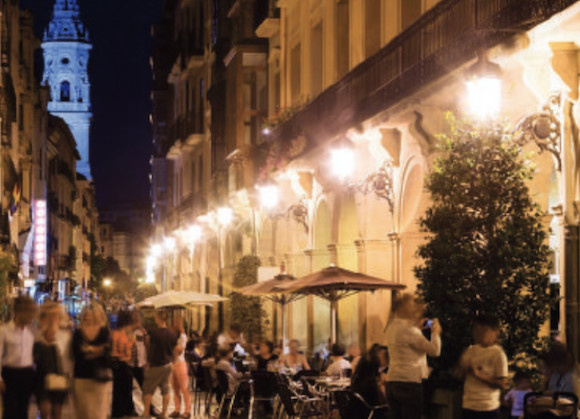Welcome to the world of Rioja’s carbonically macerated reds. Or as I affectionately call it, “Rioja Nouveau”.
Of course, carbonic maceration has long been associated with Beaujolais. For many customers, it conjures up images of 80s Beaujolais Nouveau runs; cars racing through the French countryside in a bid to bring back the first wine of the year to the UK.
More recently, it’s had somewhat of an image makeover with the rise in popularity of serious Cru Beaujolais. Then, there is the synonymity with some natural wines that favour the fresh, “vin de soif” style that comes from carbonic maceration.
But when it comes to the rising popularity of carbonically macerated reds, Rioja, it seems, has been left out in the cold, forgotten in favour of more classic, oaky styles from the region. And yet in the bars of Logroño, La Rioja’s capital city, you’ll see hordes of people drinking “tinto fresco”, sometimes just a couple of months old, as a perfect accompaniment to the pinchos that the city is so famous for.
It’s also one of the most traditional styles of the region.
Iker Martínez Pangua of Bodegas Altún in Rioja Alavesa recalls how his grandfather used to make reds in this style, but they were always sold in bulk to the larger wineries.
Because of this heritage, Altún still makes a carbonic red which locally is one of their most popular wines.
Arturo de Miguel of the biodynamic winery Artuke, has a similar story. “We continue to elaborate by this method because historically at home we have always worked like this,” he says.
Interestingly, both of these wineries are in Rioja Alavesa, the Basque part of Rioja. Although you can find carbonic reds made throughout Rioja, Alavesa is the most well-known region for the style. “Rioja Alavesa’s Tempranillo I think it is well suited to carbonic maceration because of the acidity in our area. It combines freshness but not too much tannin,” says de Miguel.
Equally, Pangua thinks that the sites close to the River Ebro are best suited to this style thanks to a warmer climate than those nearer to the Sierra Cantabria mountain range where vineyards can reach heights of 700 metres. The grapes from the lower sites have a good balance between the freshness from Alavesa’s chalky soils and the warmer climate that lend the fruity flavours one would expect from carbonic maceration.
So why are we not seeing more of them? Pangua has the answer. “It is more of a local wine since a good destemmed, classic Rioja is more understood throughout the world.”
It’s true. When a consumer thinks of Rioja, they often have an oaky, age-worthy bottle in mind. But that doesn’t mean there isn’t a market for this style, particularly in places consumers
are looking for fresher, lighter, more interesting styles of wine. “They are currently popular in large capitals such as Madrid and Barcelona and in the Basque Country,” says de Miguel. Perhaps London will be next?
What both winemakers agree on is that there is a future for carbonic reds from Rioja, thanks to the global trend towards fresher wines with lower alcohol. And why not?
They’re balanced, they’re great value and they bear a name that many consumers are already familiar with.
The flavours, although reminiscent of Beaujolais, are darker, giving a point of difference. It’s a hand-sell, absolutely, with a big warning for those looking for a classical Rioja. But there is no reason why ‘Rioja Nouveau’ couldn’t grace UK dinner tables, standing proud alongside Beaujolais and other carbonic reds. We just need to give it a chance.




